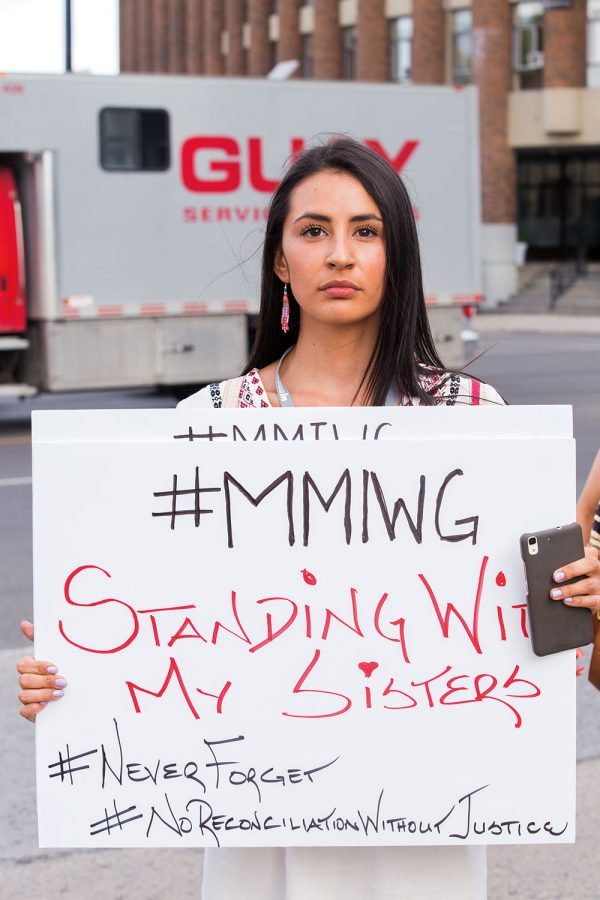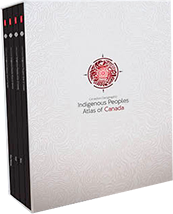Reconciliation

There was a smell to newsprint, I remember. Black ink stained my fingers as I rode the city bus into journalism school, awkwardly shuffling the oversized pages of my local newspaper. Do you remember those days?
There are headlines that I remember. Headlines like: “RCMP identifies woman’s remains.” The unnamed Indian woman, only a body. Her death warned the good people of the town to avoid unsafe areas until police could move the bad element along. Do you remember those days? Hard to believe that was only 20 years ago.
Caucasian women suffering the same fate had different headlines. “Jenny we love you, we miss you” or “Waiting for Alicia.” Loved and grieved, their humanity valued, their deaths were newsworthy.
This is not anecdotal. Dozens of well-researched essays compare how media have framed such stories. The evidence is in: race mattered.
Subject. Verb. Object. The arrangement of persons, choice of verbs, and order of facts. Building a narrative is not unbiased.
Journalists tell the stories of missing and murdered Indigenous women differently now. If the awards we bless each other with every year mean anything, then differently is better. But it took years to do work we are proud of. And lest we forget, we did not get there on our own. Indigenous families insisted their loved ones deserved equal word counts, to be above the fold. Mothers marched through downtown streets, held vigils, lit candles. Women glued photos of their lost sisters onto coloured bristol board, scrawled their names in bold black marker. They planted themselves on Parliament Hill in the path of journalists heading to scrums. Why did we make families push so hard and wait so long?
My friends, journalism is not a reconciliation-free zone.
There’s a story the late Métis journalist Olive Patricia Dickason liked to tell. In 1970, she applied to university to study Indigenous history. She was told she couldn’t because there was no such thing. She persisted. Her PhD, entitled A Concise History of Canada’s First Nations, was eventually published as a history text that landed on my desk in Native history, an optional class. Separate from the mandatory Canadian history.
Today we debate whether Indigenous history should be mandatory. What happened to Indigenous Peoples impacted all of Canada: treaties, residential schools, water, environment and economic development. Do we believe history slices cleanly into two isolated halves? How would Canada be different if we equally valued both?
Journalism is the first draft of history. Indigenous journalists do not want a seat at the old table. We have broken your table and built our own. We’ve invited all Canadians to sit with us. Our journalism made Indigenous people the subject of the verb, not the object.
Our histories and our journalism collided on Twitter in 2017. Remember the #AppropriationPrize? Does removing Cornwallis’s statue erase history? If we acknowledge Sir John A. Macdonald’s dark side, is Canada’s civic history and pride destroyed?
Reconciliation means putting our truths in the same story. Stories built on half-history lead to tropes not truths. Simplistic solutions and stereotypes served quick, as easy to digest as Pablum. These tropes stay in the public realm despite evidence to the contrary, because evidence to the contrary is rarely reported. It’s what has been described as “searchlight journalism.” Reporters shine a light, briefly, intensely, on a crisis. There is a burst of press. Then silence. A void. Until the next crisis.
These tropes stay in the public realm despite evidence to the contrary, because evidence to the contrary is rarely reported.
In 2016, seven children in Attawapiskat were treated for drug overdoses, suspected suicide attempts. Maclean’s ran this headline: “The unasked question about Attawapiskat.” That question was: Why don’t they move? That is not an unasked question. It is usually the first-asked question. It is definitely the always-asked question. It is, too often, the only question ever asked.
We haven’t tackled the toughest issues yet. Journalists afflict the comfortable. We don’t get a free pass when it’s our turn. We learned something from covering the National Inquiry into Missing and Murdered Indigenous Women and Girls. It was painful and shameful, but the outcome was worthwhile. So I hope we’ll keep plugging away at this, even when it’s hard. For journalists, reconciliation will come word by word, story by story, one truth at a time.

Order now
from Amazon.ca or Chapters.Indigo.ca or contact your favourite bookseller or educational wholesaler




